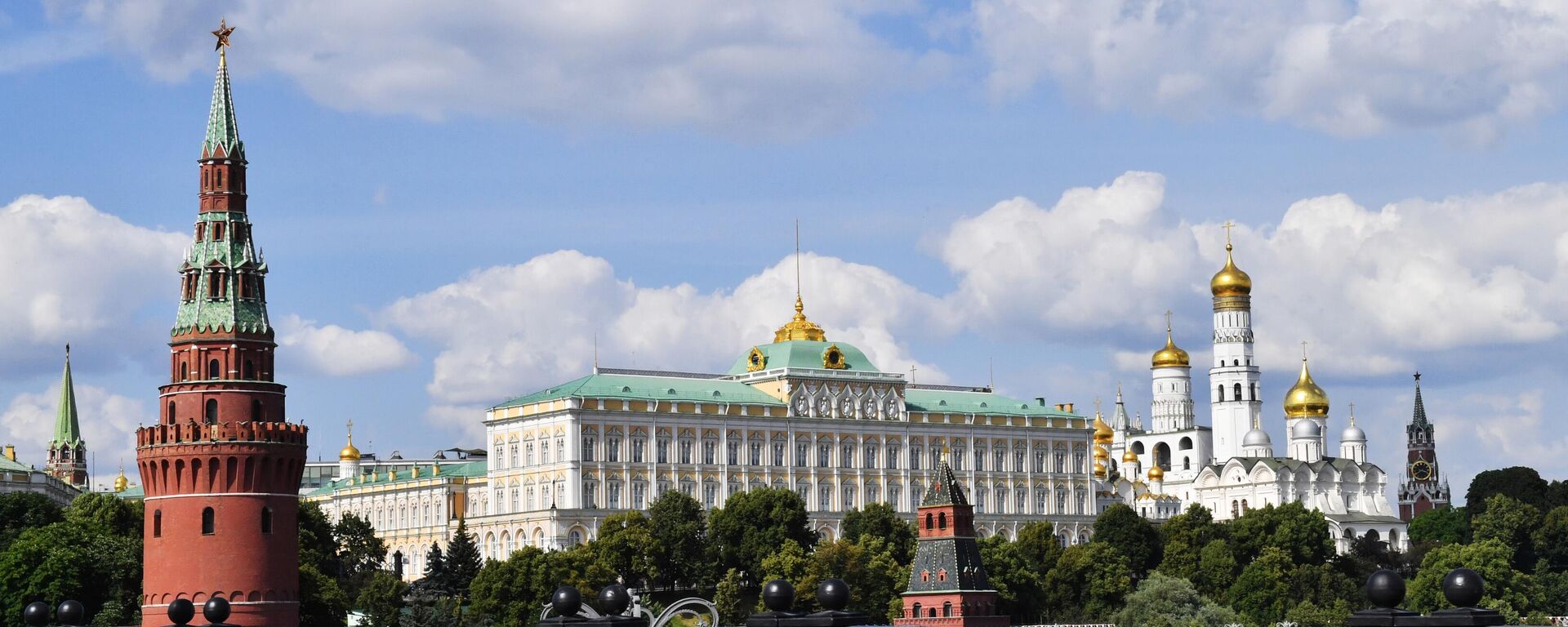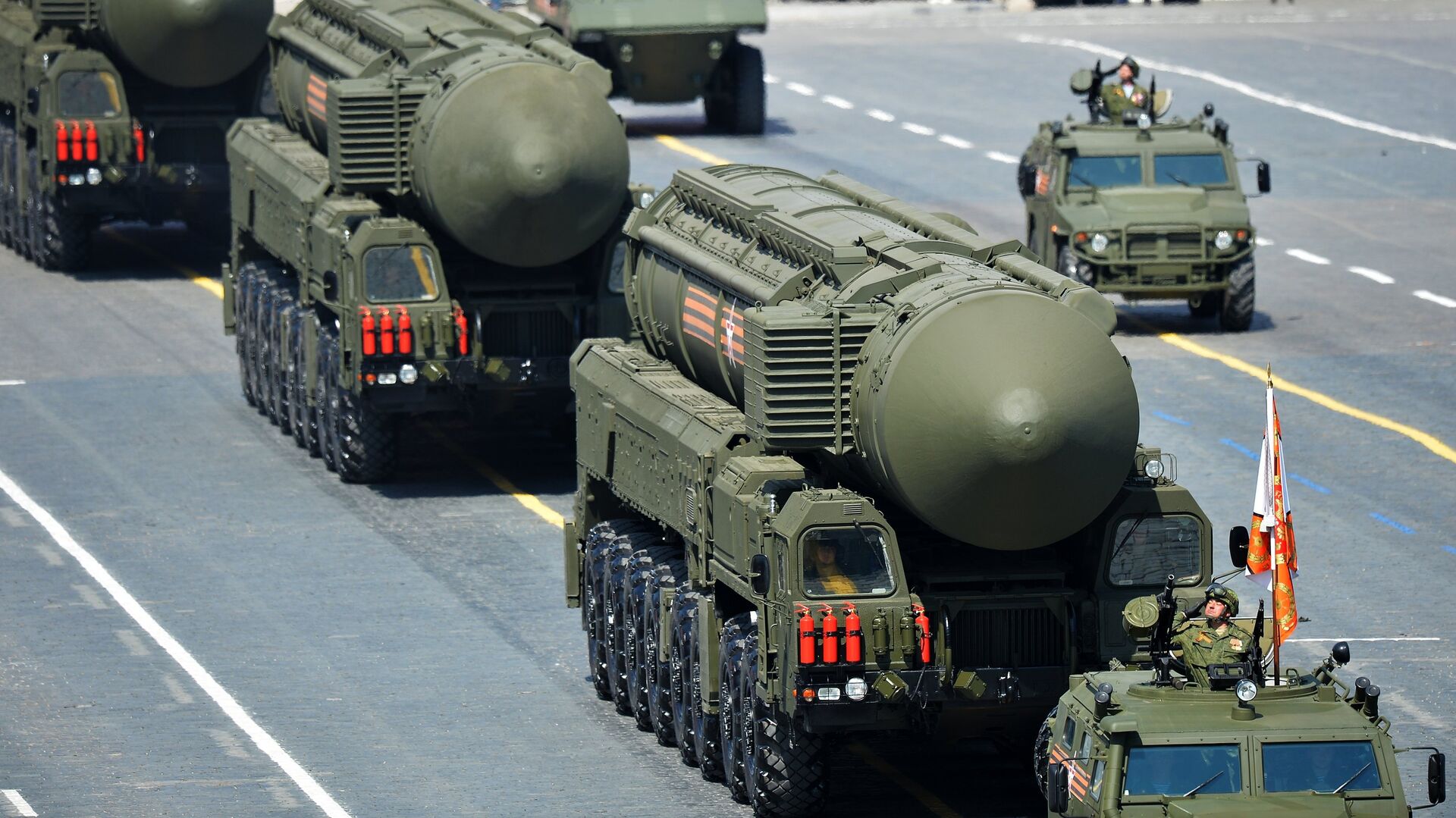https://sputnikglobe.com/20241119/russias-new-nuclear-doctrine-what-has-changed--1120927693.html
Russia’s New Nuclear Doctrine: What Has Changed?
Russia’s New Nuclear Doctrine: What Has Changed?
Sputnik International
Kremlin spokesman Dmitry Peskov earlier said that the update of the doctrine was necessary due to heightened tensions around Russian borders and nuclear nations supporting Kiev in its conflict with Russia.
2024-11-19T12:56+0000
2024-11-19T12:56+0000
2024-11-19T12:58+0000
russia
vladimir putin
nuclear doctrine
changes
borders
cruise missiles
weapons of mass destruction
military
https://cdn1.img.sputnikglobe.com/img/102362/31/1023623155_0:308:3094:2048_1920x0_80_0_0_c5ac7de1fc5e0976bc9d174bad0ee881.jpg
Russian President Vladimir Putin has authorized the country’s updated nuclear doctrine, bringing into force changes that he first announced in September. What are the updates about?Under the current doctrine, in addition to the aforementioned clauses, Russia can also press the red button if:There is an attack with the use of conventional weapons against Russia and (or) Belarus as members of the Union State, which poses “a critical threat to their sovereignty and (or) territorial integrity” (“the very existence of the state is at risk” term has been omitted).There is "reliable information about a mass launch of means for an aerospace attack" (strategic and tactical warplanes, cruise missiles, unmanned aerial vehicles, as well as hypersonic and other systems) and their crossing of Russia’s state border.Additionally, the revised doctrine lists more threats that require counteraction through nuclear deterrence, among them the development of anti-ballistic missile systems, deployment of conventional weapon systems that can strike Russian territory, and potential sabotage plots to cause large-scale environmental disasters.Kremlin spokesman Dmitry Peskov has meanwhile stressed that changes to the doctrine were made in order to adapt "our vision of the use of nuclear weapons to the realities of the modern-day world."
https://sputnikglobe.com/20240928/nuclear-doctrine-update-reflects-response-to-russias-adversaries---kremlin-1120332837.html
russia
Sputnik International
feedback@sputniknews.com
+74956456601
MIA „Rossiya Segodnya“
2024
Oleg Burunov
https://cdn1.img.sputnikglobe.com/img/07e4/09/0b/1080424846_0:0:2048:2048_100x100_80_0_0_3d7b461f8a98586fa3fe739930816aea.jpg
Oleg Burunov
https://cdn1.img.sputnikglobe.com/img/07e4/09/0b/1080424846_0:0:2048:2048_100x100_80_0_0_3d7b461f8a98586fa3fe739930816aea.jpg
News
en_EN
Sputnik International
feedback@sputniknews.com
+74956456601
MIA „Rossiya Segodnya“
Sputnik International
feedback@sputniknews.com
+74956456601
MIA „Rossiya Segodnya“
Oleg Burunov
https://cdn1.img.sputnikglobe.com/img/07e4/09/0b/1080424846_0:0:2048:2048_100x100_80_0_0_3d7b461f8a98586fa3fe739930816aea.jpg
russia's updated nuclear doctrine,
russia's updated nuclear doctrine,
Russia’s New Nuclear Doctrine: What Has Changed?
12:56 GMT 19.11.2024 (Updated: 12:58 GMT 19.11.2024) Kremlin spokesman Dmitry Peskov earlier said that the update of the doctrine was necessary due to heightened tensions around Russian borders and nuclear nations supporting Kiev in its conflict with Russia.
Russian President Vladimir Putin has authorized
the country’s updated nuclear doctrine, bringing into force changes that he first announced in September. What are the updates about?
The previous version singled out four situations in which the Russian head of state may decide on the use nuclear weapons: a ballistic missile attack on Russia; an attack on the country using weapons of mass destruction; an attack on Russian state or military facilities; and an aggression against Russia with the use of conventional weapons when "the very existence of the state is at risk."
Under the current doctrine, in addition to the aforementioned clauses, Russia can also press the red button if:
There is an attack with the use of conventional weapons against Russia and (or) Belarus as members of the Union State, which poses “a critical threat to their sovereignty and (or) territorial integrity” (“the very existence of the state is at risk” term has been omitted).
There is "reliable information about a mass launch of means for an aerospace attack" (strategic and tactical warplanes, cruise missiles, unmanned aerial vehicles, as well as hypersonic and other systems) and their crossing of Russia’s state border.
Unlike the 2020 version, the new doctrine separately stipulates that Russia is authorized to use nuclear weapons if jointly attacked by "any non-nuclear state", which is supported by a country possessing nukes.

28 September 2024, 13:37 GMT
Additionally, the revised doctrine lists more threats that require counteraction through nuclear deterrence, among them the development of anti-ballistic missile systems, deployment of conventional weapon systems that can strike Russian territory, and potential sabotage plots to cause large-scale environmental disasters.
Kremlin spokesman Dmitry Peskov has meanwhile stressed that changes to the doctrine were made in order to adapt "our vision of the use of nuclear weapons to the realities of the modern-day world."




